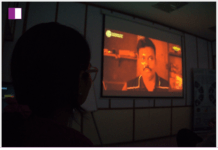As per WARC Media, forecasts about ad investment in CTV this year remain minor in the context of a $526.8bn global pureplay internet ad market
Advertising spending on Connected TV (CTV) is increasing as viewers and advertisers migrate from linear broadcast television. However, whilst CTV is keeping overall television spend stable, it is not yet attracting new dollars to the platform, according to WARC’s latest report.
As a result, CTV growth is three times slower than retail media at the same point in its development.
WARC Media’s latest Global Advertising Trends report, ‘Connected TV’s next episode’, examines advertising investment and consumption patterns of CTV, defined as streamed video viewed on a smart TV or a TV connected to the internet.
Additionally, the ‘sell side’ of the market is fragmenting into smaller operators as linear TV spend declines (particularly in the US), transforming the economics of the TV market.
Key findings outlined in WARC Media’s latest Global Ad Trends report, ‘Connected TV’s next Episode’ are:
CTV gains eyeballs as consumers embrace greater choice
As younger generations favour streaming and smart TV adoption proliferates, there are growing opportunities for media owners to diversify ad revenue streams and for brands to engage hard-to-reach audiences.
In 2023, Gen Z is forecast to spend 90 minutes on average on streaming versus 86 minutes on linear TV, according to GWI. Smart TV adoption is also playing a key role. Samsung TV’s latest research showed that the ability to access video streaming apps is “by far the most important feature” when it comes to smart TV capabilities.
Connected TV ad spend increases, but there’s room for growth
CTV ad investment is expected to reach $25.9bn globally in 2023, up 13.2% versus last year, and is forecast to continue to grow at a compound CAGR of 10.4% over the next five years, according to GroupM.
However, CTV media owners are mostly competing for existing TV budgets rather than winning a share of spend from digital channels like social, or accessing new budgets such as retail media (it only took retail media 10 years to grow tenfold, and at the same time the size of the CTV ad market only grew three-fold.
As per WARC Media, CTV ad investment forecasts this year remain minor in the context of a $526.8bn global pureplay internet ad market and the $115.2bn Meta is expected to earn in ad revenue. YouTube’s ad revenue in 2023 is still forecast to be 17.4% greater than the entire CTV ecosystem, with that gap narrowing to 13.2% next year.
The fragmented CTV landscape must still improve its effectiveness
The CTV landscape is highly fragmented across tech vendors and content publishers. This poses issues, not least in the ability of brands to measure incremental reach. Scale is the first consideration. While linear TV can reach tens of millions with a single creative, CTV’s key selling point – i.e. its ability to help brands to target audiences and avoid wastage – risks contradicting that key attribute of mass scale.
Advertisers must also be aware of the limitations of CTV ad inventory. Research suggests audiences are reaching the point of subscription fatigue, while smart TV owners remain in the minority worldwide, although levels vary across markets.
Co-author of the report, Alex Brownsell, Head of Content, WARC Media, said, “CTV ad spend is growing, but not as fast as one might expect. Whilst eyeballs are rapidly shifting from broadcast to streaming, this is evolution, not revolution. The market is fragmented, and CTV ad investment is mainly being drawn from existing budgets. More work must be done to help CTV to realise its full potential and ensure that media owners are able to attract ad dollars from beyond the current confines of the TV market.”






































